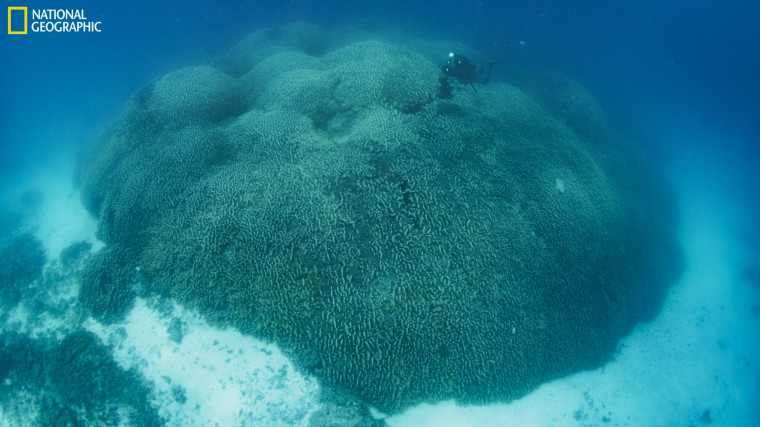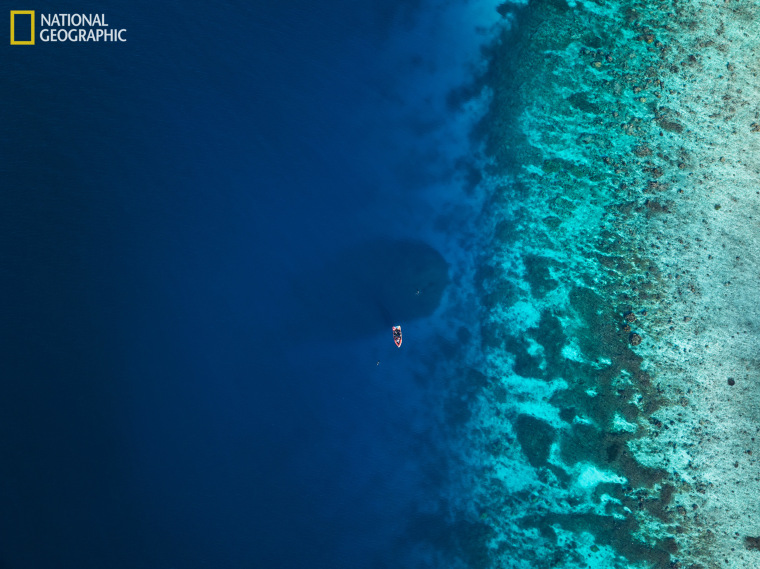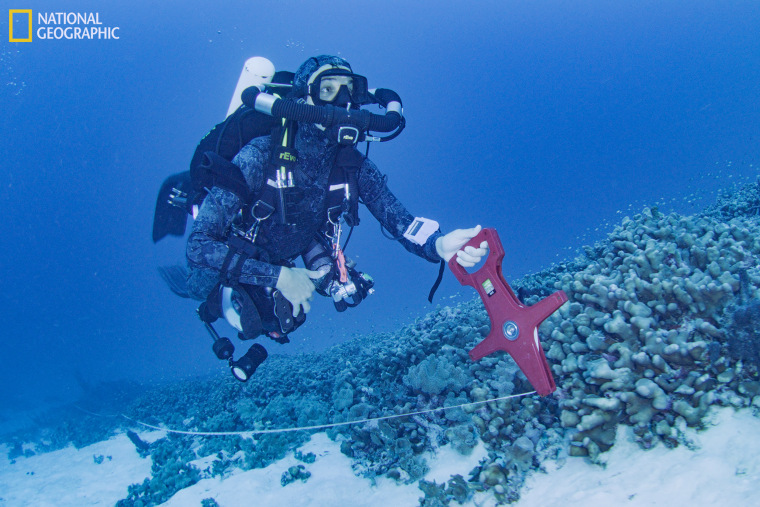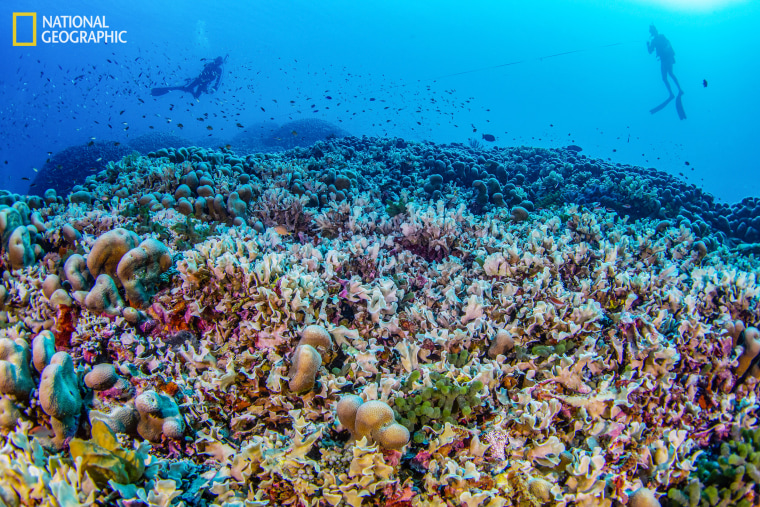HONG KONG — For at least three centuries, it grew in secret on the seabed of the southwestern Pacific Ocean.
Now, the largest coral ever recorded has been discovered, scientists said Thursday, and it’s so big it can be seen from space.
It was found by a National Geographic team conducting an expedition in the Solomon Islands in October to study ocean health.
From the surface, “it looked like a shipwreck,” said Molly Timmers, lead scientist of the Pristine Seas expedition. But the team’s cinematographer dove to take a closer look and found a “mega coral hiding in plain sight.”
“It was a very exciting discovery,” Timmers told NBC News in an email Thursday.

Using measuring tape, scientists found that the coral colony spans about 111 feet wide, 104 feet long and 18 feet high — large enough to fit two full-size basketball courts side by side and longer than the world’s largest animal, the blue whale.Estimated to be about 300 to 500 years old, the coral is three times larger than the previous record-breaker named “Big Momma” in American Samoa, researchers said, but it had never been recorded, and the local community was unaware of its existence.
“While Big Momma looked like a huge scoop of ice cream plopped down on the reef, this newly discovered coral is as if the ice cream started to melt, spreading forever along the seafloor,” Timmers said in a statement.
Enric Sala, founder of Pristine Seas, said in the statement that it was like finding “the world’s tallest tree” just when scientists thought “there is nothing left to discover on planet earth.”

Tiny organisms called coral polyps come together in complex networks to form colonies that then make up even larger coral reefs.This one is mostly brown with bright splashes of yellow, blue and red, and its rippled surface resembles ocean waves, according to the team.
Moreover, the mega coral is “in excellent condition,” providing essential habitat, shelter and breeding grounds for an array of species from shrimp and crabs to fish, Timmers said.
However, this coral faces both local and global challenges.
“Overfishing removes organisms that have essential functions in sustaining the health of the ecosystem,” Timmers said, noting that every organism on a coral reef plays a vital role, such as sea cucumbers that clean the sediment and giant clams that filter bacteria from the water column.
Global warming is another challenge that could drive this coral to bleach and eventually die, she said, as the oceans warm because of climate change.

David M. Baker, an associate professor at the University of Hong Kong who studies coral reefs, said the discovery was “remarkable.”Corals are “effectively immortal,” said Baker, who was not involved in the expedition. “The fact that this coral has persisted through significant environmental change is a testament to its adaptability — in addition to the excellent conditions it must enjoy.”
However, even the most remote coral reefs are not immune to climate change, he said.
“The existence of large and old corals is a sign of hope — that it’s not too late to protect, conserve and restore the oceans while fighting against climate change,” he said.

The Solomon Islands have the world’s second-highest coral diversity, with more than 490 species of hard and soft corals.The world is currently experiencing a fourth global coral bleaching event, with mass bleaching confirmed in at least 62 countries and territories worldwide from 2023 to early 2024, according to the National Oceanic and Atmospheric Administration.
